Why Local Crop Diversity Matters
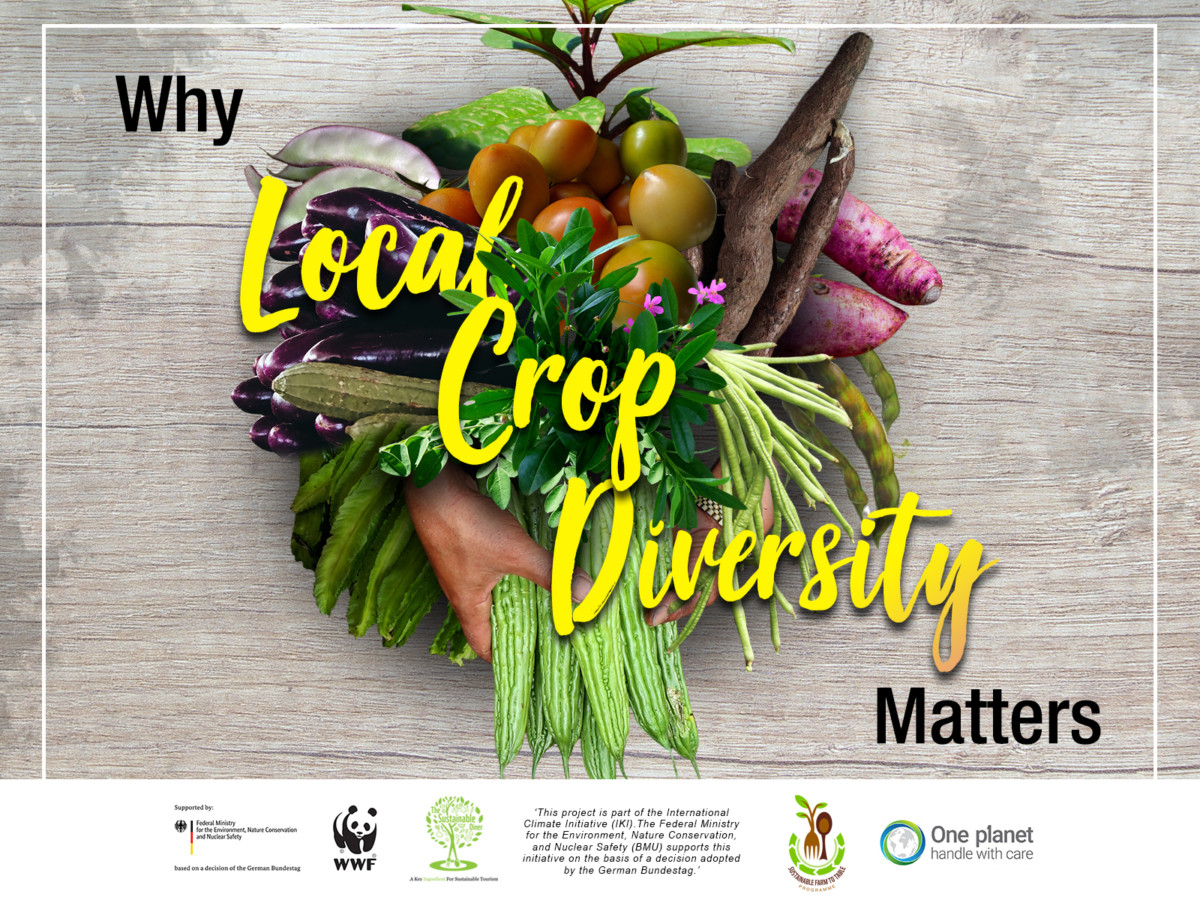
As we are all interconnected with each other, both humans and all other living organisms, it is important to evaluate our actions in dealing with the environment. Healthy ecosystems are vital for human survival— this is where we get food, water, medicines, clothes, shelter, and energy, just to name a few.
The International Day for Biological Diversity is celebrated globally every May 22, and this year’s theme is: “Our solutions are in nature”. This highlights hope, solidarity, and the value of working together across all sectors to build a future in harmony with nature. Promoting the importance of local crop diversity in the Philippines can help conserve the environment and support communities, families, and individuals become food secure and health resilient.
1. Ensuring household food security
Crop diversity is key to food security. Indigenous vegetables are nutritious crops, easy to propagate, and naturally grow in the Philippines. Production and consumption of indigenous vegetables can provide more nutritious and affordable food options to achieve overall health and well-being. They are easy to propagate because they are already adapted to our climate.
2. Sustaining dietary diversity
Most local crops are good sources of micronutrients, protein, and energy. Growing and eating locally grown root crops and protein-rich food options can reinforce essential nutrients needed daily. Because the different parts of indigenous vegetables can be consumed, such as sweet potato or taro leaves and tubers, local crop diversity offers a treasure trove of vitamins and minerals. A variety of food plants are consumed, instead of just relying on one crop.
3. Conserving the environment
Local crops and the use of indigenous varieties serve a significant role in pest tolerance due to diversity, and its inherent hardiness through years of evolution. This also ensures that the valuable heritage of genetic plant diversity is being conserved for future generations, as it provides the necessary adaptation to different environmental conditions. Local crop diversity, also called “Future Smart Food” by the Food and Agriculture Organization, helps us conserve water and land resources amidst climate change and environmental degradation since they require less external inputs and thrive in extreme weather conditions.
4. Promoting sustainable consumption and production
Maximize food resources by minimizing the steps throughout the food value chain. An example of this is getting fruits and vegetables from a home garden and using these for the family’s consumption. Food grown through gardening is a sustainable food source. The process of home gardening ensures that fresher and higher quality crops with better nutritional values, with zero to minimal chemical inputs, are being harvested and consumed by the household. Indigenous vegetables can also be regrown from cuttings or tubers, allowing households and communities to grow food from scraps. Check out this Filipino recipe book for simple, nutritious meals that use indigenous vegetables, as published by the Food and Nutrition Research Institute (FNRI) and International Institute of Rural Reconstruction (IIRR).
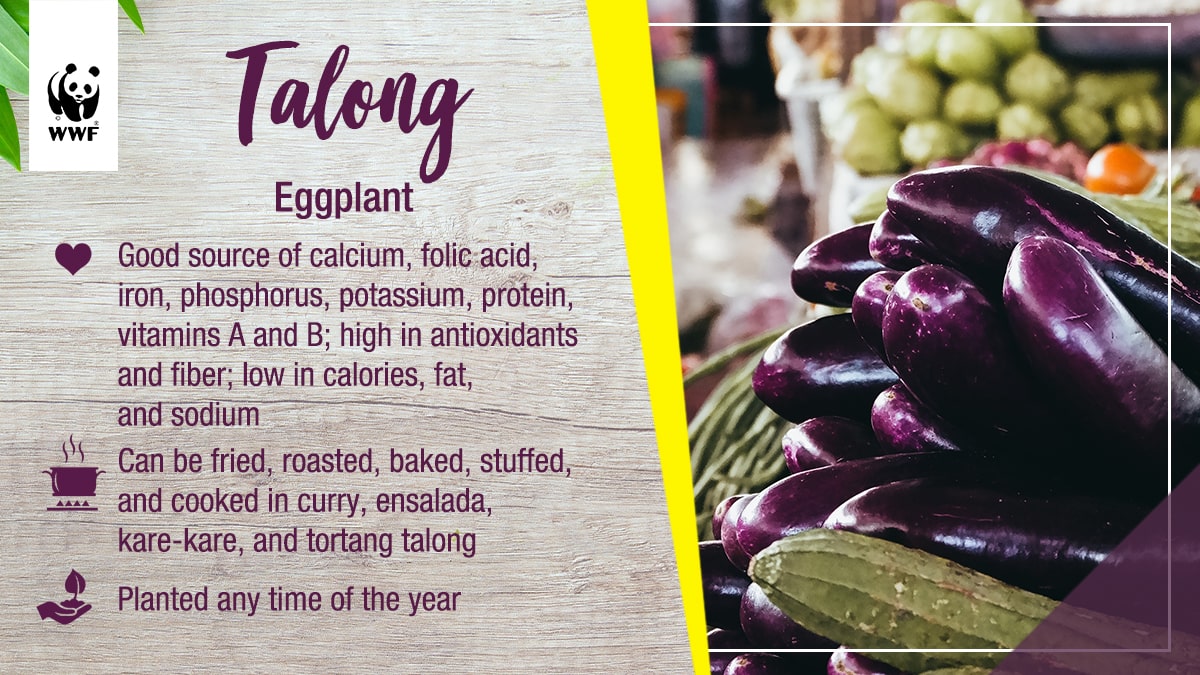
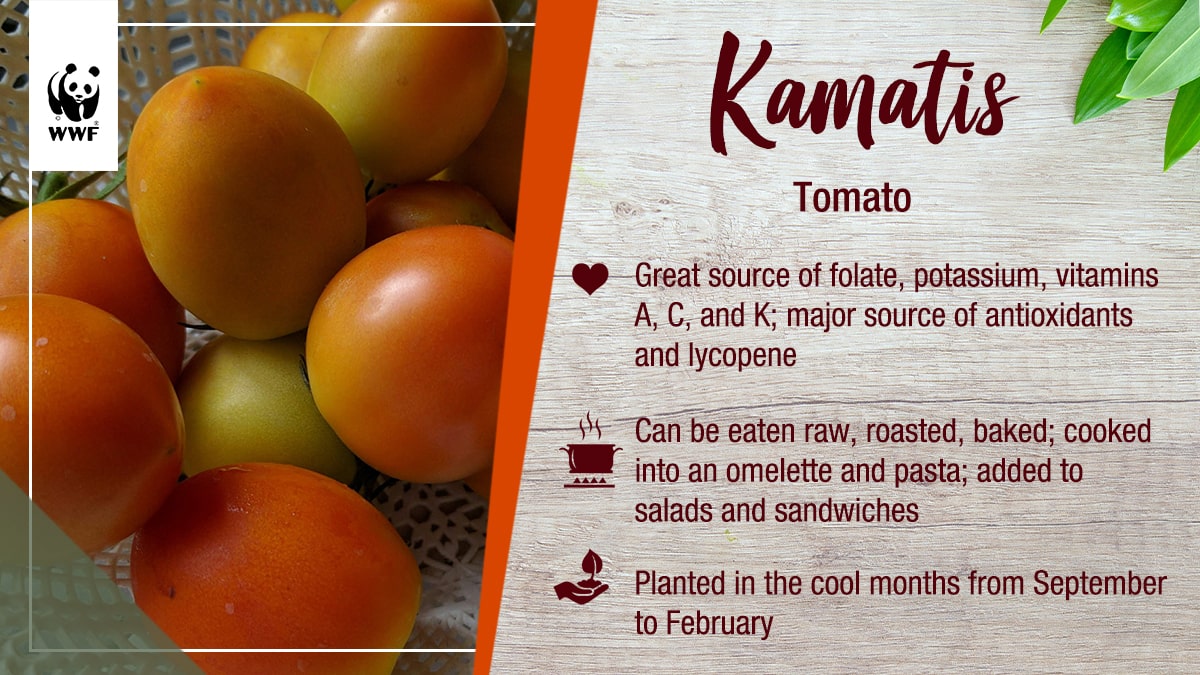


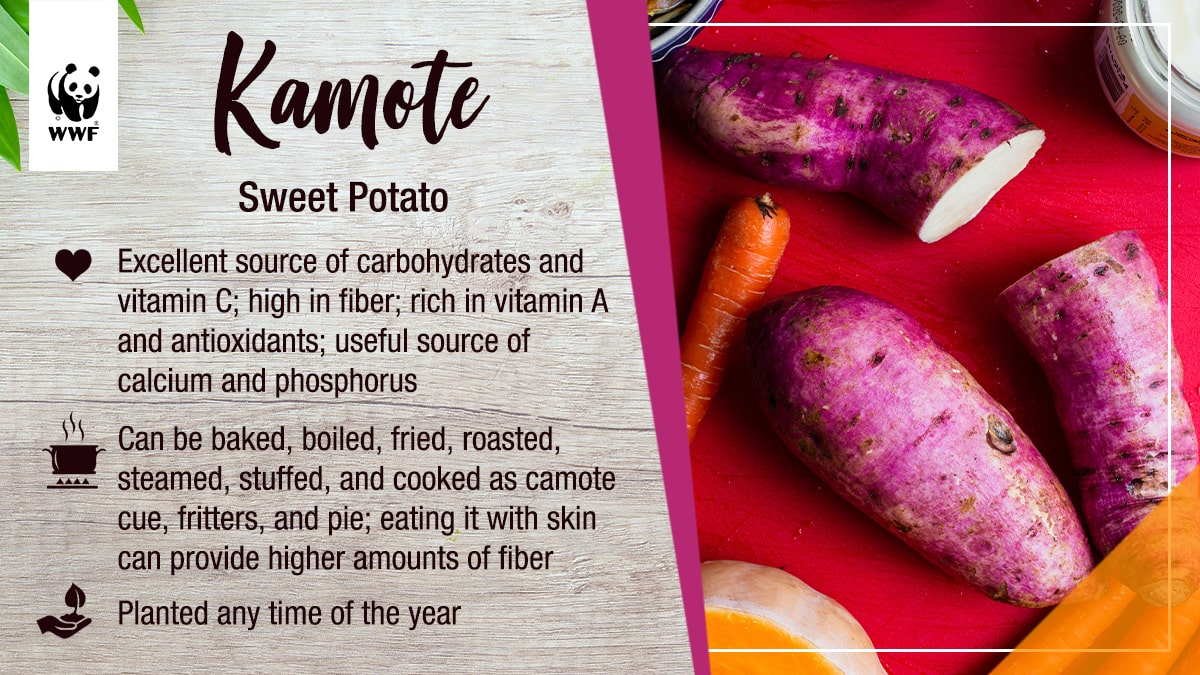
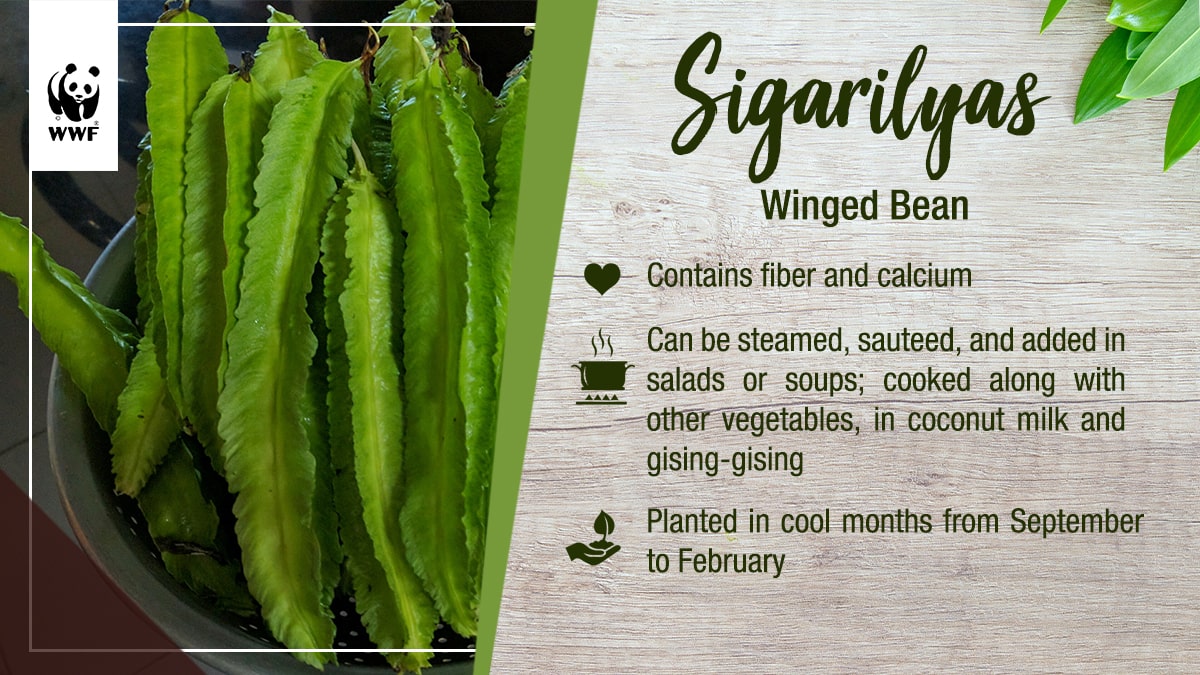
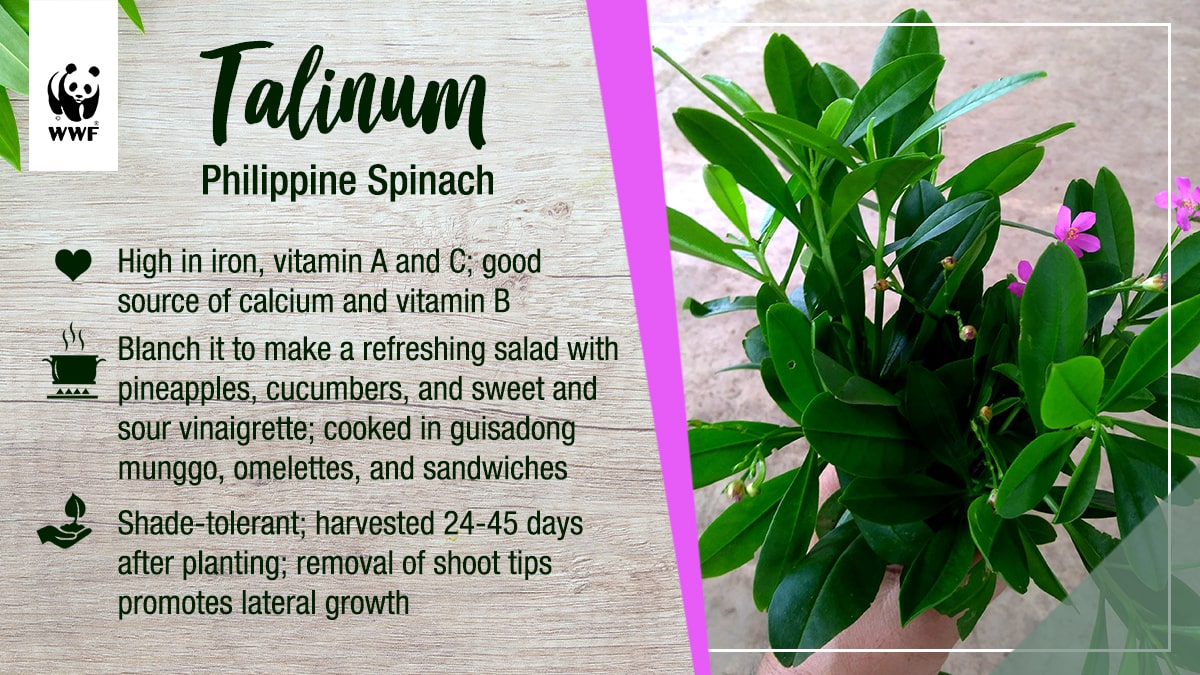
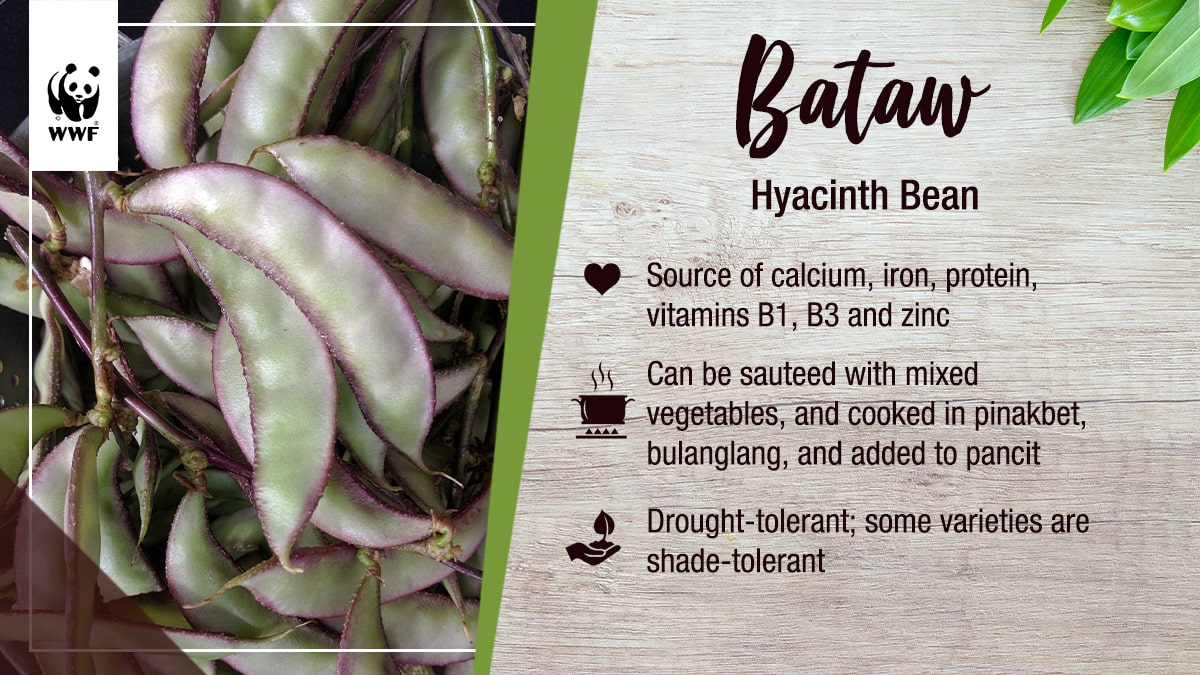
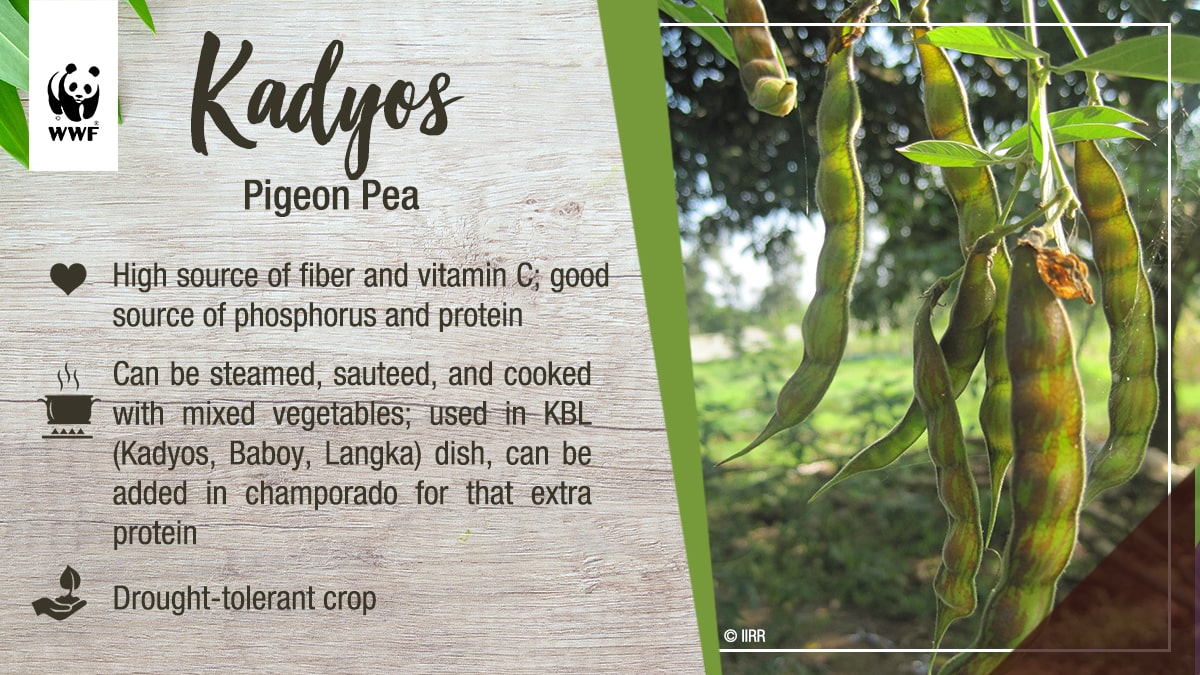

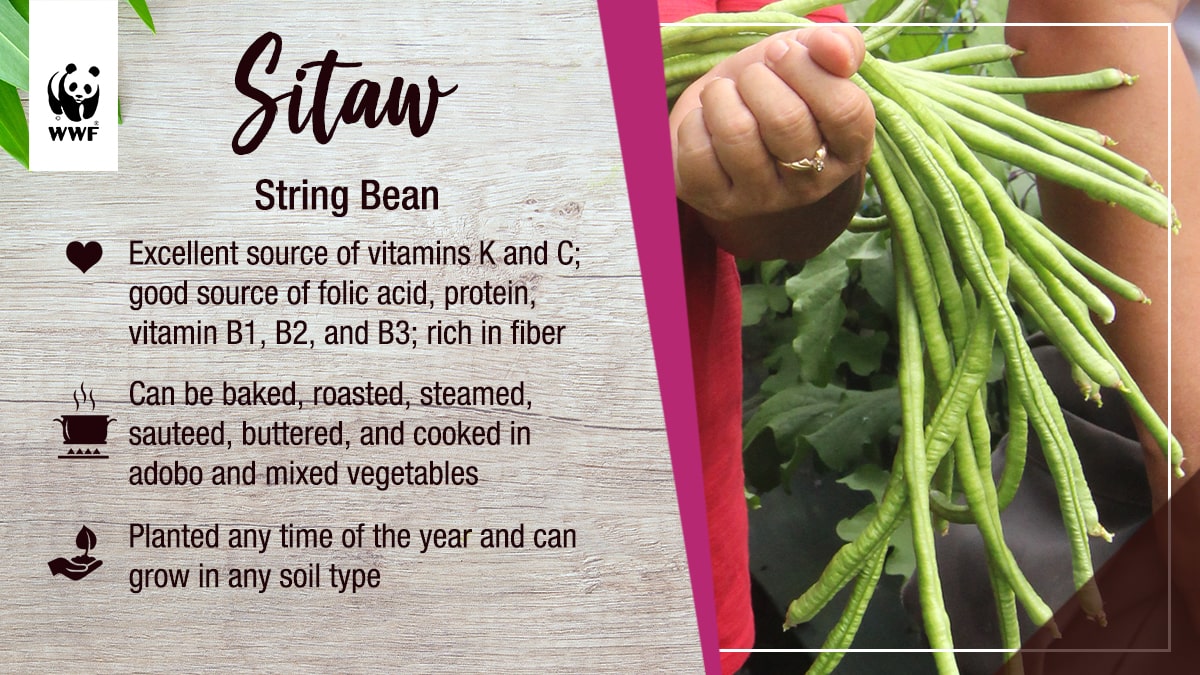
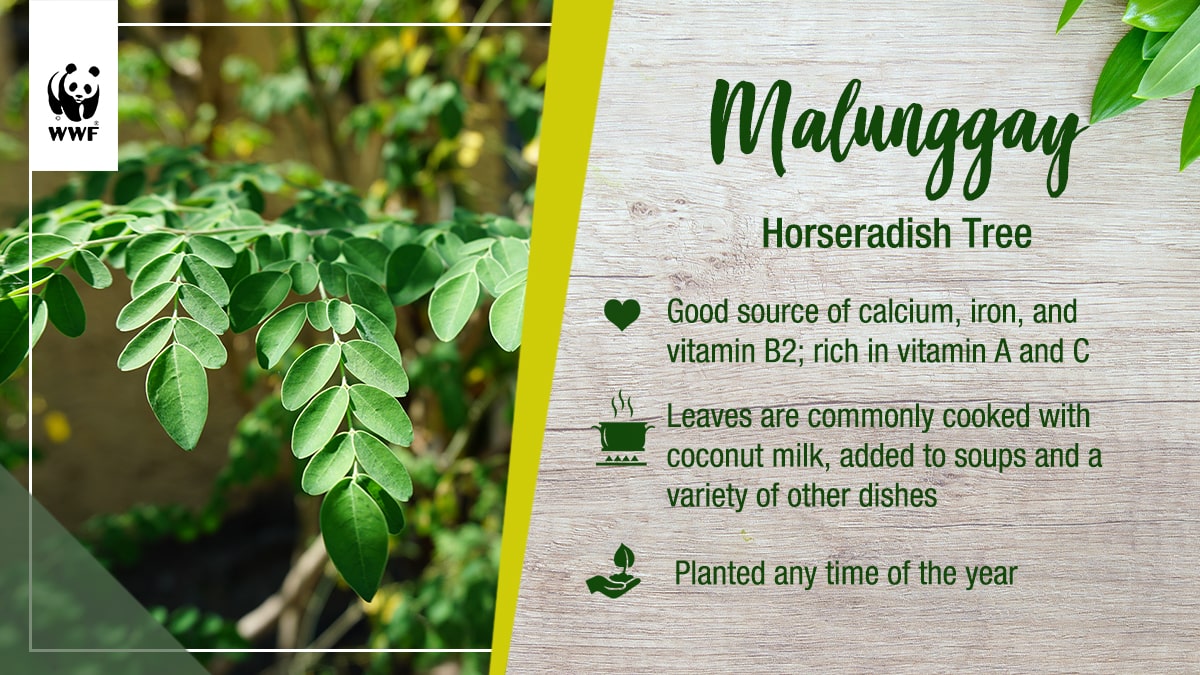
Graphics designed by Kristan Gabriel Villalon, Visual Media Officer for WWF-Philippines’ The Sustainable Diner Project.
Photos were taken by:
Jonna Ellaine Jordan/ WWF PH - Kamatis, Kamoteng Kahoy, Bataw, Sigarilyas
Kristan Gabriel Villalon/ WWF PH - Malunggay, Alugbati, Ampalaya
Monci Hinay/ WWF PH - Talinum
Alo Lantin/ WWF PH - Sitaw
IIRR - Kadyos
Louis Hansel/ Unsplash - Kamote
Devi Puspita Amartha Yahya/ Unsplash - Talong
References:
- Food and Agriculture Organization of the United Nations (FAO). 2020. Crop production manual. Appia. Retrieved from: http://www.fao.org/3/ca7556en/CA7556EN.pdf
- Department of Agriculture (DA). 2017. Regional Field Office No. 02. High-Value Crops Development Program for Ampalaya, Eggplant, Sweet Potato and Tomato
- Food and Nutrition Research Institute (FNRI), International Institute of Rural Reconstruction (IIRR). 2019. Katutubong Gulay Recipes. Retrieved from: https://bit.ly/2SWg3RA
- Oro, E.M., Baguilat, I., Anunciado, M. S., Itliong, K., Valdemoro, C., Calica, M., de Castro, R., Barbon, W., Thy, O., Soksophors, Y., Dominguez, D., Soria, G., Capanzana, M., Agdeppa, I., & Gonsalves, J. 2020. Information resources on gardening, nutrition and nutrition-sensitive agriculture. International Institute of Rural Reconstruction (IIRR). Retrieved from: https://bit.ly/3foc8Xs
Sources were retrieved on 4 May 2020.
The Sustainable Diner project, under Sustainable Consumption and Production, is part of the International Climate Initiative (IKI). The Federal Ministry for the Environment, Nature Conservation, and Nuclear Safety (BMU) supports this initiative on the basis of a decision adopted by the German Bundestag.
For more information, please contact:
Melody Melo-Rijk
Sustainable Consumption and Production Project Manager
mmelorijk@wwf.org.ph
Jonna Ellaine Jordan
Integrated Marketing Communication Specialist
jjordan@wwf.org.ph
Monci Hinay
Sustainable Food Systems Project Manager
mhinay@wwf.org.ph
Zeth Antaran
Sustainable Food Systems Project Officer
zantaran@wwf.org.ph
